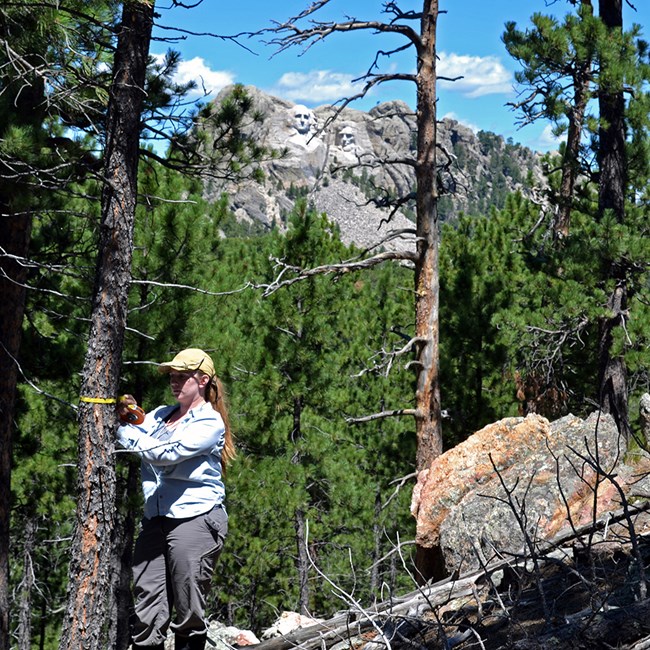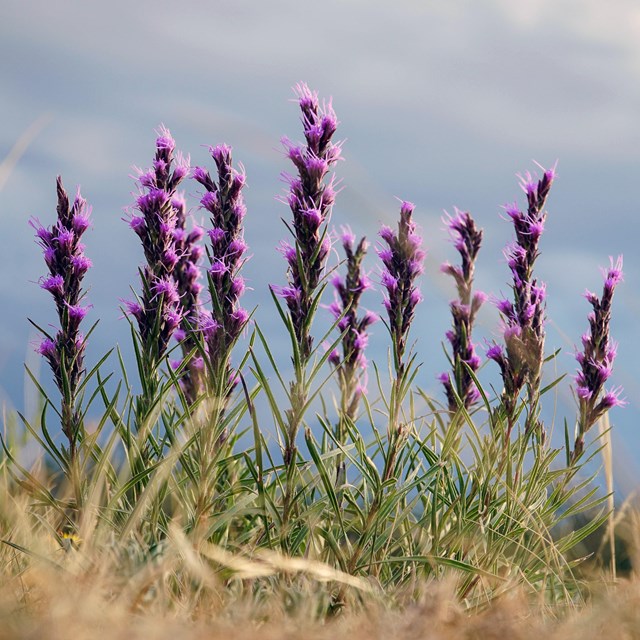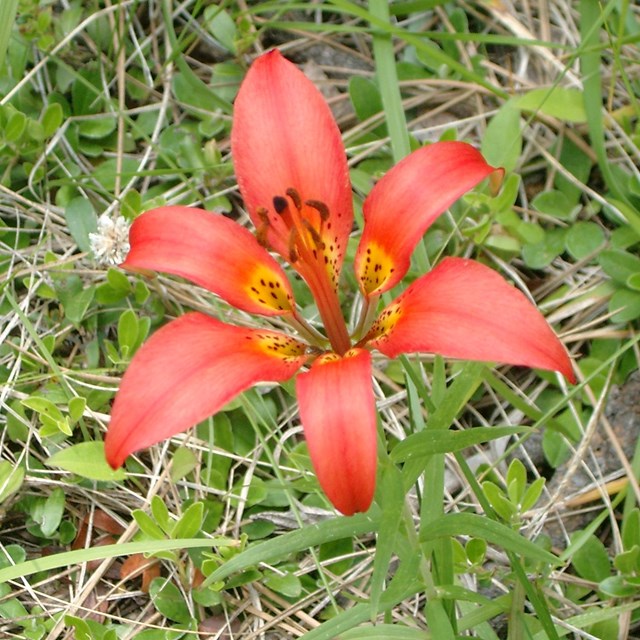
NPS
Mount Rushmore National Memorial, the most visited park in the network, lies in the central Black Hills of southwestern South Dakota. Although most visitors come to see the sculpture, Mount Rushmore is quite rich in natural resources. Its steep canyons, cliff faces, and rocky outcroppings host a variety of wildflowers, birds, bats, and butterflies. The park also hosts stands of old growth ponderosa pine, a unique and valuable resource since much of the surrounding Black Hills has been logged.
As is the case in many other network parks, controlling the spread of exotic plants and fire management are priorities for the park. Another major natural resource concern is the mountain pine beetle. This species can quickly kill entire stands of pines, threatening the old growth ponderosa pines as well as the integrity of the trees throughout the park as a whole.
We monitor landbirds, plant communities, and weather and climate at this park.
Featured Information
-
 Species Lists
Species ListsFind species lists for this park here
-
 Rocky Mountain Region Digital Herbarium
Rocky Mountain Region Digital HerbariumFind plants from Mount Rushmore National Memorial in this searchable online collection of plant specimens
Reports and Publications
Read more about our work at this park in the resource briefs (short summaries), protocols (monitoring procedures), monitoring reports (detailed results), or inventories (assessments and lists of natural resources) below.
Source: NPS DataStore Saved Search 2418. To search for additional information, visit the NPS DataStore.
Source: NPS DataStore Saved Search 2419. To search for additional information, visit the NPS DataStore.
Source: NPS DataStore Saved Search 2352 (results presented are a subset). To search for additional information, visit the NPS DataStore.
Source: NPS DataStore Saved Search 3384. To search for additional information, visit the NPS DataStore.
Quick Reads
Last updated: February 14, 2020
